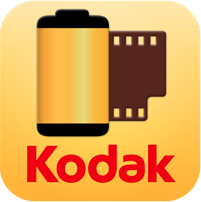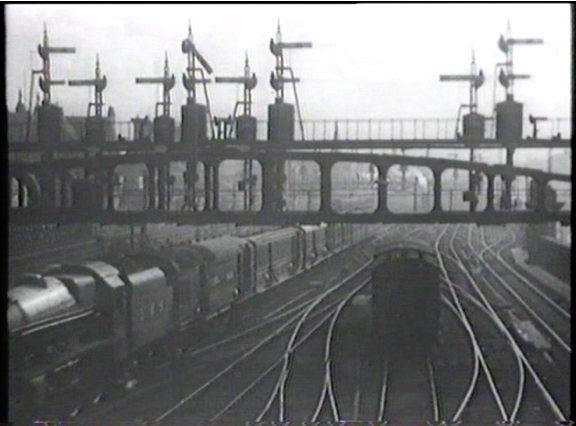
|
By Graham K. Rogers

For all the digital world that many of us are surrounded by, there are times when the apparently older world of the analogue intrudes. I have been examining a number of analogue sources in the last few days, especially related to film technology. The old media are not ready to lie down and fade away just yet.
Last week with a teaching unit I realised I had a perfect video to illustrate the ideas of distribution: the famous documentary, Night Mail (24 minutes) made in 1936 by John Grierson for the GPO Film Unit (the BBC was radio only then) with music by Britten and a poem by Auden. My problem was that the version I had (2 copies no less) was in the VHS (PAL) format, long superseded by digital disk technology.
I work at a Faculty of Engineering where we have ways to make things work and a VHS machine was tracked down, but late Thursday it was found that, due to lack of use, the heads were corroded. The Dean of the Faculty took over. After some serious cleaning, and a run of a test video, I saw the opening scenes for the first time in a long time. With the equipment available, when I arrived the next morning a 1.36 GB file in MPG format was available for me on a flash drive.

Screen shot from Grierson's Night Mail - GPO Film Unit
While discussing the video with the Dean, we talked about other forms of technology and how these had been replaced: for example the early (12") laser disks (these were analogue and not digital). Some, like my Dean, still have these. We also brought up the CDROM and the move to DVD (digital video disk) that had had a comparatively long existence, although these are disappearing as downloading takes over. Along with the DVD, Blu-Ray was mentioned, which I could remember being thought of - around 2001 - as an almost impossible Holy Grail because of the heat issues involved (Richard Hermes Pages 2-3).
While we were talking, the Dean moved over to a desk and, almost guiltily, uncovered a turntable. I was impressed and mentioned how many shops in certain shopping malls in Bangkok still cater for those who want to play analogue recordings. The number is increasing and Amazon reports a 748% increase in sales of vinyl since 2008.
Likewise in camera technology, despite the warnings of the death of film, Fuji has continued to make film in 35mm and 120 sizes as has Ilford with its range of black and white films. It was also announced that, despite the troubles that the parent company, Eastman Kodak, was in, the production of film and other consumer technologies was to continue under the auspices of a new company, Kodak Alaris.
When looking at the announcements surrounding the new company and the continuing availability of Kodak branded films, I found a number of Kodak apps had been developed, although these are still under the umbrella of the Eastman Kodak Company. Some of these were for consumer services, but I downloaded the Kodak Professional Film App to get a feel for the films and other services available at the high end.
The app appears beautifully finished as one would expect, but while there are some nice sections, the way it handles data (and the data itself) is in need of updating.
As the app opens there is a Welcome tour that runs the user through a series of screens explaining the app. These do not appear again, but can be viewed by pressing the "?" icon at top right of the main menu. There are six information sections that the user may access:
- Type of Film shows the 5 black & white film types available and the 4 colour negative types. The label displayed may be pressed and a panel opens with information about each of these films. The same information is also used in the next section.
- What Film to Use is split into 7 separate sections -
- Commercial Studio & Location
- Long Lenses
- Product Photography
- Fast Action
- Portrait, Fashion
- Fine Art
- Nature, Travel & Outdoor
For each of the types of photography the app has a list of films that Kodak considers suitable. Most types have a number of options, but Long Lenses has a single suggestion - Portra 800. The film name reveals a further screen (as in the above Type of Film) with an Outline and Overview of the film, Specifications, Resources (a tech publication when available and a sample image. Some film recommendations appear in more than one shooting type.
- Film Formats lists each film available in the three formats available (35mm, 120 Size and Sheet Film). There are 8 films for 35mm, 7 for 120, and 6 for Sheet film (some of which are marked as special order).
- Sun Calculator uses the current time and location, but this was wrong. While the iPhone is set for Bangkok Time (and is correct), the app showed that Sunrise was 02:07 and Sunset 14:05. Even changing this using manual settings and entering the Time Zone and City failed to fix this.
The app Light Trac which I use for finding the position of the sun and the moon, is totally accurate. Sun Surveyor Lite is also a useful app for this type of information.
- Processing B/W Film is a tutorial that runs a user through developing and printing the film. Settings for Method, film type, chemicals, fixer used may be changed. When the Start button is pressed, the app enters "Dark Room Mode" and each part of the process is shown. Advanced Settings allow changes in the timing to be adjusted before the process is started.
-
Retail/Lab Locator opens with a small map panel (centered on the USA). Entering Chicago (for example) shows 8 pins in the immediate area of the city (others are shown if the map is zoomed out). Red pins give locations that process the film, while green pins show locations that sell the film.
 The UK is not so well off. Searching for Milton Keynes - a city some way north of London - shows several locations that sell film within a radius of about 200 miles or more - but only one location for processing (Scotland and the north of England are comparatively better endowed). Interestingly Paris (3) and Hamburg (4) are far better served with processing labs than London (0). A Google search will reveal other labs (not Kodak).
The UK is not so well off. Searching for Milton Keynes - a city some way north of London - shows several locations that sell film within a radius of about 200 miles or more - but only one location for processing (Scotland and the north of England are comparatively better endowed). Interestingly Paris (3) and Hamburg (4) are far better served with processing labs than London (0). A Google search will reveal other labs (not Kodak).
Pressing one of the listed retailers gave me further details, including a more localised map and phone details. "Get directions" was not available, I suspect as there is no direct road between here and there. A final "View Website" opened a web page of the business (when available).
I was disappointed to see that searching the Locator section for information about Thailand came up negative. By coincidence, the first shop I went into this morning had a fridge full of Kodak - as well as Ilford and Fuji - films, although to be fair is was a specialist camera shop in Thaniya Plaza.
Not only is the film available, but there is (and has been for many years) a Kodak in Thailand and they do list the films among several other services on the website. This may be a case of the right hand not knowing what the left is up to. Likewise Singapore, Malaysia and Vietnam are not shown in the app, with a Google search bringing up many locations with Kodak products.
While some of the information included with the app is really quite useful, there are some parts that are in need of fixing. It was last updated in May 2013 and is not optimized for iOS 7. As the new company will be seeking to expand (or at least consolidate) its position, perhaps some changes are needed to bring the app up to peak condition.
Graham K. Rogers teaches at the Faculty of Engineering, Mahidol University in Thailand where he is also Assistant Dean. He wrote in the Bangkok Post, Database supplement on IT subjects. For the last seven years of Database he wrote a column on Apple and Macs.
|

|





